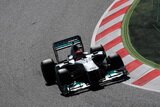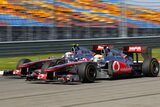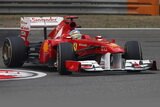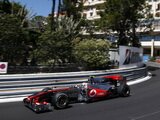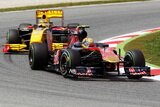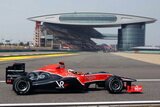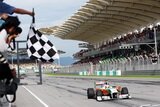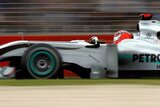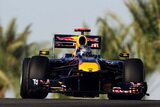The all-new 5.067-kilometre street circuit will be artificially lit - meaning excellent visibility for the drivers - but Bridgestone have taken the unprecedented step to be sure that fans can still differentiate between tyre compounds as easily as they would in normal daylight.
“We are using a special paint for Singapore,” explains Hirohide Hamashima, Bridgestones director of motorsport tyre development. “We dont believe this will make any difference to the racing, but for the spectators and the media it should make it a little easier to tell which of our tyres are being used.”
Singapore is the second new venue on the 2008 calendar after Valencia (also a street circuit) and again Bridgestone have worked closely with the Formula One teams and the sports governing body, the FIA, to ensure that their choice of soft and super-soft dry compounds is the correct one.
“There are different factors we look at when deciding tyre allocation and in particular we look at the track layout, the track surface and the temperatures we are likely to encounter,” says Hamashima.
Whilst the track layout can be assessed remotely and analysing predicted weather conditions does not require anyone to be physically at the circuit, the track surface analysis does require a visit to the location.
“In advance of a race at a new destination we send out a team of engineers to laser scan the surface,” says Hamashima. “Scans are taken all the way around a lap and this information is then analysed to give us a good idea of how the track surface should react with our tyres.”
Unlike Valencia, there will be no race meetings taking place on the new circuit prior to the Singapore Grand Prix weekend, theoretically making this an even bigger step into the unknown for Bridgestone.
“Where there have been race meetings before at a facility, we can get an idea of how tyres react with the circuit, even if Bridgestone tyres were not used at the race,” says Hamashima. “Before the European Grand Prix in Valencia there was a race meeting, so we could form a general picture of racing there, but in Singapore it will be all-new for everyone, so this could be an additional challenge.”
But despite all the apparent uncertainties, Bridgestone believe that from a tyre perspective, running a Grand Prix under lights should not present any particular problems.
"We have looked at many different aspects regarding a race taking place at night and we have no specific concerns,” says Hamashima. “Bridgestone have good experience in endurance motor races which run at night so this has been useful.
“The temperatures will be cooler than during the day and there will be no heat generated from the sun's radiation, but we predict an ambient and track temperature of around 27 degrees Celsius, which is warmer than some tracks we visit during the day. Ultimately, the way the tyre works at night will be the same as it works during the day."
In fact, arguably the biggest challenge for the Bridgestone crew - and all those in the Formula One paddock - is going to be the logistical one of adapting to working so much later in the day.
“A lot of work takes place after the sessions so we will be working very late, and this will be an exciting aspect of the weekend,” says Hamashima. “Because of this we will be starting our days a lot later than we would usually, so it will be the first time we have had official lie-ins on a Formula One weekend!”
Comments:




